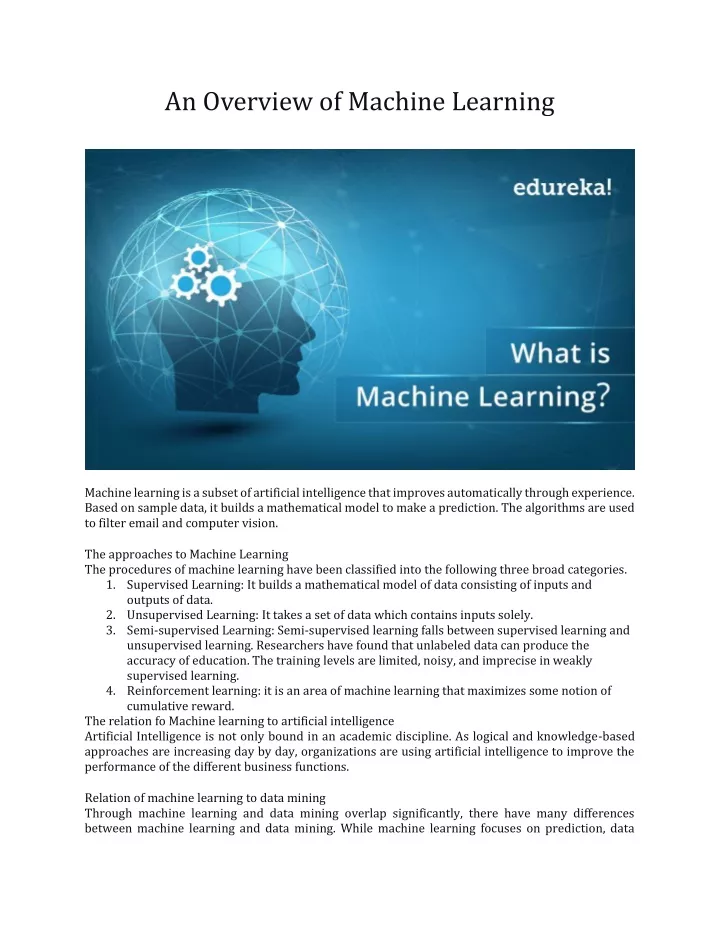Welcome to the future of news reporting, where the power of machine learning is reshaping the way we gather and disseminate information. In this rapidly evolving digital age, the news industry is undergoing a profound transformation, and artificial intelligence (AI) is at the forefront, revolutionizing how stories are delivered and consumed. From automated content generation to personalized news recommendations, machine learning is unlocking new possibilities, enabling us to navigate the vast sea of information with unprecedented efficiency and accuracy.
Machine learning, a branch of AI, empowers computer systems to learn and improve from experience without explicit programming. By analyzing vast amounts of data, algorithms can identify patterns, make predictions, and even automate decision-making processes. In the context of news, this powerful technology has tremendous potential to enhance every stage of the journalistic process, from fact-checking and information gathering to story creation and distribution.
With machine learning algorithms constantly analyzing and aggregating news from multiple sources, journalists can stay up-to-date on the latest developments in any field with ease. AI-driven news aggregation platforms deliver personalized news digests based on individual preferences and browsing behaviors, ensuring that readers are presented with relevant and engaging content. As the sheer volume of news continues to increase, machine learning provides the tools to filter out the noise and focus on what truly matters.
The future of news reporting lies in the seamless integration of machine learning into the newsroom. As journalists embrace AI-powered tools, they can leverage the capabilities of natural language processing and sentiment analysis to gain deeper insights into public sentiment and societal trends. Using advanced algorithms, journalists can identify and investigate emerging stories, delve deeper into data analysis, and present compelling narratives that resonate with their audiences.
In this era of information overload, it is vital for news consumers to evaluate the credibility of the sources they encounter. Machine learning algorithms can assist in this process, flagging potential biases, analyzing the quality of reporting, and helping identify disinformation campaigns. By embracing AI-driven fact-checking tools and verification systems, journalists can strive for accuracy and combat the spread of misinformation.
The future is undoubtedly bright for machine learning in news reporting. As developments in AI continue to accelerate, journalists and news organizations have the opportunity to harness the power of technology to uncover new stories, engage readers in innovative ways, and navigate the vast landscape of information with unrivaled efficiency. By embracing the transformative potential of machine learning, the future of journalism holds endless possibilities.
NewsGPT.ai
Remember, the power of machine learning is not merely a sensational promise, but a tangible reality that is shaping the future of news reporting. From transforming the way we consume news to empowering journalists with cutting-edge tools, AI is revolutionizing the landscape of journalism. As we dive deeper into this exciting era, let us explore the endless potential offered by machine learning and embrace the opportunities it presents. The future of news is here, and it is unleashed through the power of machine learning.
1. Machine Learning in News
The field of machine learning has undoubtedly transformed the way news is generated, shared, and consumed. With advancements in artificial intelligence (AI), news organizations have turned to machine learning algorithms to enhance their ability to deliver timely and relevant information to readers.
Machine learning algorithms play a crucial role in filtering and curating news articles. By analyzing vast amounts of data, these algorithms can intelligently recommend relevant news stories based on individual preferences and browsing history. This personalized approach allows readers to stay informed about the topics they care about the most, ultimately providing a more tailored news experience.
Furthermore, machine learning enables news organizations to tackle the issue of fake news. By training algorithms on large datasets of credible sources, AI systems can identify patterns and characteristics that distinguish reputable news from unreliable sources. This helps in verifying and fact-checking news articles, ensuring that accurate information reaches the audience while minimizing the spread of misinformation.
The integration of AI and machine learning in news also extends to the realm of news gathering itself. Journalists can now leverage AI-powered tools and platforms that assist in data analysis, sentiment detection, and news categorization. This helps journalists in their research and story development process, enabling them to uncover meaningful insights and angles that may have otherwise gone unnoticed.
Machine learning’s impact on the news industry is undeniable. From personalized news recommendations to combating the spread of fake news, the power of AI and machine learning continues to revolutionize the way news is created, shared, and consumed. As we delve further into the future, it is clear that machine learning will play an increasingly pivotal role in shaping the landscape of news and information.
2. AI News Guide
In this section, we will delve into the world of AI (Artificial Intelligence) as it relates to news reporting. With the rapid advancement of machine learning techniques, the field of journalism is being revolutionized in ways we could have only imagined just a few years ago. Let’s explore the exciting possibilities that AI brings to the world of news.
Firstly, machine learning is transforming the way news is generated and curated. AI algorithms can be trained to scan through vast amounts of data, filter out irrelevant information, and highlight the most important and newsworthy stories. This automated process enables news organizations to quickly analyze and process large volumes of data, helping to uncover meaningful trends and insights that may have otherwise been overlooked.
One key benefit of machine learning in news is the potential for personalized news delivery. AI-powered systems can analyze users’ browsing patterns, preferences, and previous interactions to tailor news content specifically to each individual. This level of personalization ensures that readers receive news that aligns with their interests, creating a more engaging and relevant news experience.
Furthermore, AI can also assist in fact-checking and verifying the credibility of news sources. With the rise of misinformation and fake news, machine learning algorithms can help identify potential inaccuracies or biased information by comparing it with known reliable sources. This can help journalists and readers alike to make more informed decisions about the credibility of the news they consume.
In conclusion, the power of machine learning in the field of news is immense. From automated data analysis to personalized news delivery and improved fact-checking, AI is shaping the future of journalism in profound ways. With continued advancements in technology, we can expect even more exciting developments in the intersection of machine learning and news reporting. Stay tuned as we explore the next frontier of AI in the final section of this article.
3. AI for News
Artificial Intelligence (AI) has revolutionized various industries, and the field of news reporting is no exception. Machine learning applications are increasingly being integrated into newsrooms to enhance journalism and provide a more efficient way of delivering information.
Machine learning in news enables news organizations to analyze vast amounts of data, including articles, social media posts, and user interactions. By utilizing AI algorithms, these tools can automatically recognize patterns and extract valuable insights from the data. This allows journalists to uncover hidden trends, identify emerging topics, and make more informed editorial decisions.
AI news guides have become indispensable tools for journalists. These guides provide real-time suggestions and recommendations based on the content being written or researched. With the help of machine learning algorithms, journalists can access relevant articles, fact-check information, and even identify potential biases. By streamlining the research process, AI makes it easier for journalists to produce accurate and high-quality news stories.
The power of AI in news extends beyond just assisting journalists. AI algorithms can also be used to customize news content based on individual preferences and consumption habits. This personalized news experience ensures that readers are presented with articles and topics that align with their interests. Moreover, AI-powered news platforms can dynamically update and adapt the content to reflect the changing trends and preferences of the audience.
In conclusion, the integration of machine learning and AI in the field of news has immense potential. From facilitating research and fact-checking to delivering personalized news experiences, AI is transforming how news is created, consumed, and shared. As technology continues to advance, we can expect AI to further revolutionize the way we stay informed in the future.



